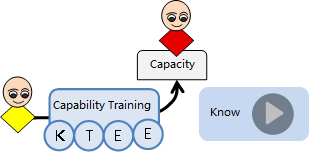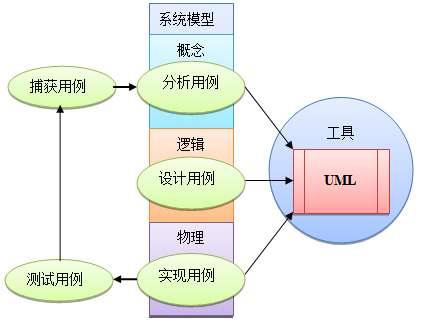|
|
| Successful Case
|
| Continental Automotive Electronics |
| Bosch Automotive Electronics |
| Schaeffler electric drive |
| Joyson Automotive Electronics |
| Huawei Technical Center |
| BMW Automotive Research and Development Center |
| Geely Auto Research Institute |
| Byd Automotive Research Institute |
| |
|
|
|
|
|
|
| Courses > Modeling |
|
 |
|
UML + Rhapsody + Embedded System Analysis Design
|
Views 233  6 6
|
|
 |
|
|
Bert
|
| Senior system architect, with more than 15 years of architecture and development experience, has undertaken a number of embedded software architecture design. |
| |
|
|
| Time Location: Beijing, Shenzhen and Shanghai open classes based on registration |
| Course Cost’╝Ü700$/Person
|
|
|
|
| Internal Training: You can customize internal training according to the needs of the enterprise. |
|
 |
Certification:
Learn about the competency model before training.
Competency assessment after training:
Online
Exams
Ability Analysis, give learning suggestions
The qualified person shall be issued a certificate as proof of vocational skill qualification
|
 |
|
|
| This course was first launched in China in October 2003 , and after years of training practice, revision and accumulation:
The course focuses on how to carry out object-oriented visualization development of concurrent, distributed, and real-time systems. The course is developer-focused and teaches Rhapsody modeling Tools for all aspects of the real-time software development lifecycle: from analysis to design, testing, commissioning, configuration management, and deployment. Includes the Unified Modeling Language (UML) needed to create complex, parallel, distributed, or real-time systems The core concept. |
| |
| Training Goal |
- Be concurrent, distributed, or real-time development Understand UML modeling methods and techniques.
- Understand the basic ideas of OO, master the basic principles of OOAD, and understand the basic OOAD methods and application techniques.
- Upon completion of this course, participants should be able to:
- Apply iterative, use case-driven, architecture-centric processes to develop robust design models
- Use UML to build models: classes, objects, capsules, protocols, components, properties, operations, relationships, stereotypes, software architectures, and the views and model diagrams that need to be related.
- Apply concepts of abstraction, encapsulation, layering, inheritance, and polymorphism
- Learn about the different views of software architecture, and the key mechanisms that must be defined to support that architecture
- Learn how to use Rhapsody tools in all development workflows: analysis, design, implementation, testing, deployment, and configuration management
|
 |
|
| Training Target: Embedded Development Engineers |
| Student Foundation: Experience in embedded development |
| Teaching Method:
Customized Course + Case Explanation + Group Discussion, 60% Case Explanation, 40% Practical Exercise
|
| Training Content: 2 Days
|
| Rhapsody model |
An introduction to Rhapsody's processes, modeling language (UML), and tools for developing real-time system models, covering Rhapsody All the main elements of the user interface, and how to create, compile, run, and debug models. |
| Passive class and Capsule class |
Explain the concept and use of Capsule interfaces, ports, protocols, and sub-capsules as well as connectors, as well as the use of general classes |
| State modeling |
Covers the use of finite state machines and statecharts to define the behavior of classes |
| System services |
An introduction to the Runtime Service Library, and the basic services it provides: timing, frames, logging, exceptions, and communication |
| Requirements analysis |
Describes how to read and understand the Requirements Segmentation artifacts and how to use them to identify candidate analysis classes. |
| Hierarchical structure |
Describes how to identify candidate capsules, protocols, and passive classes, and explores how to use capsules and passive classes to meet system design responsibilities. |
| Hierarchical structure |
Explains how complexity can be managed through the use of hierarchical capsules, including multiplexing and replication, as well as end ports and trunk ports. |
| Inheritance hierarchies |
Manage Rhapsody by subdividing capsules, passing classes, and protocols to facilitate the use of inheritance Complexity in the model. Contrast generalization and concretization. |
| Hierarchical behavior |
Describes how to manage complexity using hierarchical finite state machines, covers related concepts, including hierarchical state transitions and hierarchical states, and UML representations of these concepts. |
| Systematic hierarchies |
Describes techniques for building complex systems using tiers and packages |
| Configuration management |
It covers the process of connecting Rhapsody to the configuration management system, as well as the basic configuration management operations provided by the Rhapsody interface. |
| Integrate external code |
Shows how to integrate Rhapsody models and traditional codebases. Also included is how to decentralize Rhapsody Send user-defined data between models, or between models and external applications, in messages. |
| Design Patterns and Real-Time Modeling |
Describes some of the design patterns that are commonly used in developing Rhapsody models, and provides guidelines for applying these design templates. |
| Adaptive modeling |
An introduction to modeling dynamic structure and behavior concepts in capsules to simplify the solution of complex problems in real-time systems. |
| Concurrency modeling |
Define the three elements of concurrency (process, thread, capsule), how they relate to each other, and where each of them is used. |
| Distributed model |
Shows how to handle inter-process communication between distributed Rhapsody models (with or without
ConnexisTM) |
|
| |
|
|
| |
|
|
|
233 µ¼ĪµĄÅĶ¦ł  6 µ¼Ī 6 µ¼Ī
|
|
|
|
| Consulting Objective
|
Help build model-driven analysis, design, development, testing |
| Scope Consultation |
Requirements Modeling, Architecture Modeling, Database Modeling, Code Modeling, Test Modeling.
|
| Consultation Method |
Model-driven development process training, modeling and management tool environment construction, combined with actual customer case demonstration, team practice guidance, model evaluation standards formulation, specification formulation |
| Successful Case |
Huawei Research and Development Center, Space Center of Chinese Academy of Sciences, Nanjing 14 Institute, China Mobile Research Institute and so on. |
| For more information:010-62670969’╝ī umlooo@hotmail.com
|
|
|
|
|